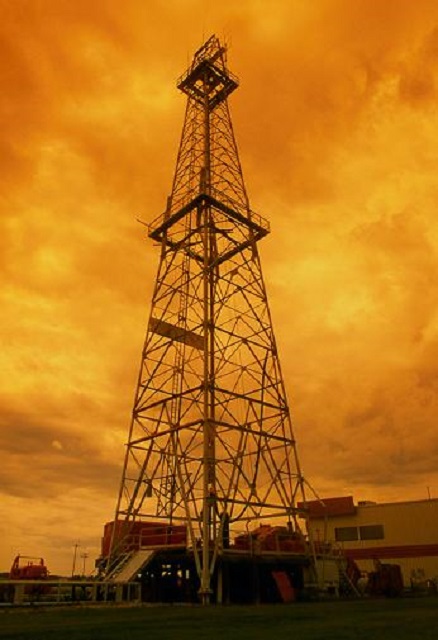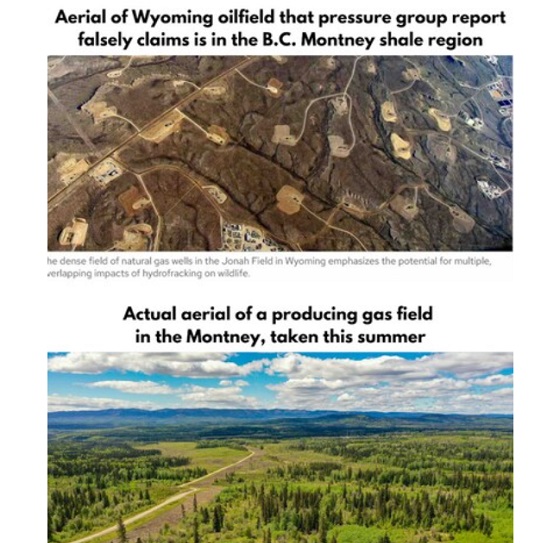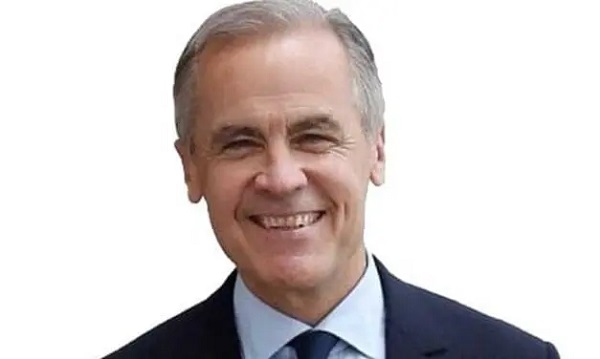Energy
The “Just Transition” Soviet style plans for Canada’s oilpatch

From the Frontier Centre for Public Policy
By Brian Zinchuk
The “Just Transition” legislation currently before the House of Commons Natural Resources Committee mentions unions a fair bit. It also mentions what are effectively five-year plans, which was a common practice for molding the economies of the Soviet Union and China, during their darkest years.
However, outside of big-inch pipeline construction, refining and the oil sands, there’s simply aren’t that many unionized companies in the oilpatch, at least in Saskatchewan. As in, next to none in the Land of Living Skies.
The legislation is question is Bill C-50, the Canadian Sustainable Jobs Act. The act is meant to assist workers in what the federal government had previously referred to as a “just transition,” away from fossil fuels-related jobs towards more “sustainable jobs.” It will create a “Sustainable Jobs Partnership Council” to draft five-year plans to do just that.
The Act’s full name is “An Act respecting accountability, transparency and engagement to support the creation of sustainable jobs for workers and economic growth in a net-zero economy.”
Specifically, Sec. 7 (a.) of the legislation focuses on unions. It says the Sustainable Jobs Partnership Council’s responsibilities include “advising the Minister and specified Ministers on strategies and measures to encourage growth in good-paying, high-quality jobs — including jobs in which workers are represented by a trade union — in a net-zero economy.”
That council also is supposed to have a balance of members who represent labour, Indigenous organizations and industry.
The thing is, there are no unions on drilling rigs. Or service rigs, for that matter.
I asked Mark Scholz, president of the Canadian Association of Energy Contractors (CAOEC) about this on Nov. 10. He said, “We do not have any unionized drilling or service rigs operating in Western Canada. Most of the oil and gas industry unionization is in the Alberta oilsands or LNG construction in British Columbia. As well, there are some drilling rig platforms operating off the coast of Newfoundland.”
He explained in Alberta and Saskatchewan, on service rigs, drilling rigs and directional drilling, there are no unions representing workers. And the CAOEC represents the companies operating almost every rig working in the oilpatch.
“In the drilling and service rig industry in Western Canada, there are no unions. That is just a simple fact,” he said.
Indeed, in 15 years of covering the Saskatchewan oil industry, and five years building pipelines prior to that, I’ve only encountered unionized workforces at the Regina Co-op Refinery Complex, and in big-inch pipeline construction contractors working for TC Energy, Enbridge, TransGas and Alliance Pipelines. I was one of those union pipeline workers.
But I’ve found them nowhere else, although there may be one unionized electrical firm operating in the Saskatchewan oilpatch.
Unionized labour is prevalent in the oil sands, however.
The legislation says this Sustainable Jobs Partnership Council must present an action plan by Dec. 31, 2025, and every five years after that. The government would also for a “Sustainable Jobs Secretariat”
Its role would be “enabling policy and program coherence in the development and implementation of each Sustainable Jobs Action Plan, including by coordinating the implementation of measures set out in those plans across federal entities, including those focused — at the national and regional level — on matters such as skills development, the labour market, rights at work, economic development and emissions reduction.”
It would also support the preparation and track the progress of the five-year plans, coordinate specific federal-provincial initiatives related to the plan, and provide administrative and policy support to the council.
For those who might not know their history, five year plans were a primary feature of economy of the Soviet Union under Joseph Stalin and the People’s Republic of China under Mao Tse-tung. They were the primary instrument for central planning of the economy in each of those nations, often resulting in massive transformations of industries and workforces, something the “Just Transition” legislation is designed to do – transform the oilpatch workforce into “sustainable jobs.”
The first Soviet five-year plan concentrated on developing heavy industry and collectivizing agriculture – directly leading into the Holodomor and the starvation of millions. My family was fortunate enough to get out of the Polish portion of Ukraine in 1930, just before the Holodomor began across the border in Soviet Ukraine in 1931.
This “Just Transition,” and its fitting upcoming five-year plan to totally revolutionize one of our key primary industries and workforce borrows just a little too much from history. We saw how that worked out.
Brian Zinchuk is editor and owner of Pipeline Online, and occasional contributor to the Frontier Centre for Public Policy. He can be reached at [email protected].
Energy
B.C. Residents File Competition Bureau Complaint Against David Suzuki Foundation for Use of False Imagery in Anti-Energy Campaigns

From Energy Now and The Canadian Newswire
A group of eight residents of Northeast British Columbia have filed a formal application for inquiry with Canada’s Competition Bureau, calling for an investigation into the David Suzuki Foundation’s (the Foundation) use of false and misleading imagery in its anti-energy campaigns.
The complaint alleges that the Foundation has repeatedly used a two-decade-old aerial photograph of Wyoming gas wells to falsely depict modern natural gas development in B.C.’s Montney Formation. This area produces roughly half of Canada’s natural gas.
Key Facts:
- The misleading image has been used on the Foundation’s website, social media pages, reports and donation appeals.
- The Foundation has acknowledged the image’s true source (Wyoming) in some contexts but has continued to use it to represent B.C. development.
- The residents claim this materially misleads donors and the public, violating Section 74.01(1) of the Competition Act.
- The complaint is filed under Sections 9 and 10 of the Act, asking the Bureau to investigate and impose remedies including ceasing the conduct, publishing corrective notices, and returning proceeds.
Quote from Deena Del Giusto, Spokesperson:
“This is about fairness and truth. The people of Northeast B.C. are proud of the work they do to produce energy for Canada and the world. They deserve honest debate, not scare tactics and misleading imagery used to raise millions in donations. We’re asking the Competition Bureau to hold the David Suzuki Foundation to the same standard businesses face: tell the truth.”
Background:
Natural gas development in the Montney Formation supports thousands of jobs and fuels economic activity across the region. Accurate public information is vital to informed debate, especially as many Canadians live far from production sites.
SOURCE Deena Del Giusto
Economy
Trump opens door to Iranian oil exports

This article supplied by Troy Media.
U.S. President Donald Trump’s chaotic foreign policy is unravelling years of pressure on Iran and fuelling a surge of Iranian oil into global markets. His recent pivot to allow China to buy Iranian crude, despite previously trying to crush those exports, marks a sharp shift from strategic pressure to transactional diplomacy.
This unpredictability isn’t just confusing allies—it’s transforming global oil flows. One day, Trump vetoes an Israeli plan to assassinate Iran’s supreme leader, Ayatollah Khamenei. Days later, he calls for Iran’s unconditional surrender. After announcing a ceasefire between Iran, Israel and the United States, Trump praises both sides then lashes out at them the next day.
The biggest shock came when Trump posted on Truth Social that “China can now continue to purchase Oil from Iran. Hopefully, they will be purchasing plenty from the U.S., also.” The statement reversed the “maximum pressure” campaign he reinstated in February, which aimed to drive Iran’s oil exports to zero. The campaign reimposes sanctions on Tehran, threatening penalties on any country or company buying Iranian crude,
with the goal of crippling Iran’s economy and nuclear ambitions.
This wasn’t foreign policy—it was deal-making. Trump is brokering calm in the Middle East not for strategy, but to boost American oil sales to China. And in the process, he’s giving Iran room to move.
The effects of this shift in U.S. policy are already visible in trade data. Chinese imports of Iranian crude hit record levels in June. Ship-tracking firm Vortexa reported more than 1.8 million barrels per day imported between June 1 and 20. Kpler data, covering June 1 to 27, showed a 1.46 million bpd average, nearly 500,000 more than in May.
Much of the supply came from discounted May loadings destined for China’s independent refineries—the so-called “teapots”—stocking up ahead of peak summer demand. After hostilities broke out between Iran and Israel on June 12, Iran ramped up exports even further, increasing daily crude shipments by 44 per cent within a week.
Iran is under heavy U.S. sanctions, and its oil is typically sold at a discount, especially to China, the world’s largest oil importer. These discounted barrels undercut other exporters, including U.S. allies and global producers like Canada, reducing global prices and shifting power dynamics in the energy market.
All of this happened with full knowledge of the U.S. administration. Analysts now expect Iranian crude to continue flowing freely, as long as Trump sees strategic or economic value in it—though that position could reverse without warning.
Complicating matters is progress toward a U.S.-China trade deal. Commerce Secretary Howard Lutnick told reporters that an agreement reached in May has now been finalized. China later confirmed the understanding. Trump’s oil concession may be part of that broader détente, but it comes at the cost of any consistent pressure on Iran.
Meanwhile, despite Trump’s claims of obliterating Iran’s nuclear program, early reports suggest U.S. strikes merely delayed Tehran’s capabilities by a few months. The public posture of strength contrasts with a quieter reality: Iranian oil is once again flooding global markets.
With OPEC+ also boosting output monthly, there is no shortage of crude on the horizon. In fact, oversupply may once again define the market—and Trump’s erratic diplomacy is helping drive it.
For Canadian producers, especially in Alberta, the return of cheap Iranian oil can mean downward pressure on global prices and stiffer competition in key markets. And with global energy supply increasingly shaped by impulsive political decisions, Canada’s energy sector remains vulnerable to forces far beyond its borders.
This is the new reality: unpredictability at the top is shaping the oil market more than any cartel or conflict. And for now, Iran is winning.
Toronto-based Rashid Husain Syed is a highly regarded analyst specializing in energy and politics, particularly in the Middle East. In addition to his contributions to local and international newspapers, Rashid frequently lends his expertise as a speaker at global conferences. Organizations such as the Department of Energy in Washington and the International Energy Agency in Paris have sought his insights on global energy matters.
Troy Media empowers Canadian community news outlets by providing independent, insightful analysis and commentary. Our mission is to support local media in helping Canadians stay informed and engaged by delivering reliable content that strengthens community connections and deepens understanding across the country.
-

 Agriculture2 days ago
Agriculture2 days agoCanada’s supply management system is failing consumers
-

 Economy2 days ago
Economy2 days agoTrump opens door to Iranian oil exports
-

 Alberta1 day ago
Alberta1 day agoCOVID mandates protester in Canada released on bail after over 2 years in jail
-

 Business24 hours ago
Business24 hours agoCanada’s loyalty to globalism is bleeding our economy dry
-

 Crime1 day ago
Crime1 day agoProject Sleeping Giant: Inside the Chinese Mercantile Machine Linking Beijing’s Underground Banks and the Sinaloa Cartel
-

 Alberta1 day ago
Alberta1 day agoAlberta uncorks new rules for liquor and cannabis
-

 Business1 day ago
Business1 day agoCarney’s spending makes Trudeau look like a cheapskate
-

 armed forces23 hours ago
armed forces23 hours agoCanada’s Military Can’t Be Fixed With Cash Alone









